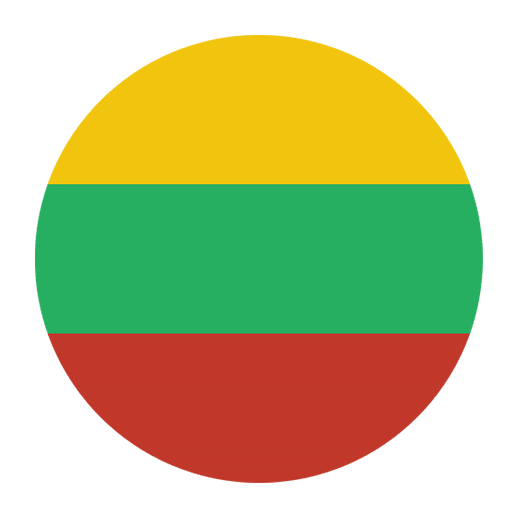Lithuanian, one of the oldest languages in the world, offers a unique linguistic journey that can be both challenging and rewarding. As a language that has preserved many archaic features from its Indo-European roots, learning Lithuanian can open up a window to understanding ancient linguistic structures. However, like any language, the best way to learn Lithuanian is through immersion and practical application. One particularly engaging method is to learn Lithuanian through its rich culinary arts. This approach not only helps you build your vocabulary and improve your language skills, but it also provides a fascinating glimpse into Lithuanian culture and traditions.
The Cultural Significance of Lithuanian Cuisine
Lithuanian cuisine is a reflection of the country’s history, geography, and cultural influences. Traditional Lithuanian dishes are hearty and often feature ingredients like potatoes, rye, beets, mushrooms, and dairy products. These dishes are more than just food; they are an integral part of Lithuanian heritage and identity. By exploring Lithuanian cuisine, you are also delving into the cultural and historical context of the language, making your learning experience more holistic and immersive.
Starting with Basic Vocabulary
To begin your journey of learning Lithuanian through culinary arts, you need to familiarize yourself with some basic vocabulary related to food and cooking. Here are some essential words and phrases to get you started:
– Maistas (Food)
– Virtuvė (Kitchen)
– Receptas (Recipe)
– Ingredientai (Ingredients)
– Virėjas / Virėja (Chef – Male/Female)
– Puodas (Pot)
– Keptuvė (Pan)
– Peilis (Knife)
– Šakutė (Fork)
– Šaukštas (Spoon)
– Druska (Salt)
– Cukrus (Sugar)
– Vanduo (Water)
By memorizing these words, you will be better equipped to understand and follow Lithuanian recipes, as well as to engage in basic conversations about food and cooking.
Exploring Traditional Lithuanian Dishes
Lithuanian cuisine boasts a variety of traditional dishes that are both delicious and deeply rooted in the country’s cultural heritage. Here are some iconic Lithuanian dishes that you can explore to enhance your language learning experience:
1. Cepelinai (Zeppelins)
Cepelinai, also known as zeppelins, are large dumplings made from grated potatoes and filled with meat, cheese, or mushrooms. They are named for their resemblance to Zeppelin airships. This dish is a staple in Lithuanian cuisine and is often served with sour cream and bacon.
– Potatoes: Bulvės
– Meat: Mėsa
– Cheese: Sūris
– Mushrooms: Grybai
– Sour Cream: Grietinė
– Bacon: Šoninė
2. Šaltibarščiai (Cold Beet Soup)
Šaltibarščiai is a vibrant pink cold soup made from beets, kefir, cucumbers, and dill. It is a popular summer dish in Lithuania, often enjoyed with boiled potatoes on the side.
– Beets: Burokėliai
– Kefir: Kefyras
– Cucumbers: Agurkai
– Dill: Krapai
– Boiled Potatoes: Virtos Bulvės
3. Kugelis (Potato Pudding)
Kugelis is a traditional Lithuanian potato pudding made from grated potatoes, onions, eggs, and bacon. It is baked until golden and crispy, and is often served with a dollop of sour cream.
– Onions: Svogūnai
– Eggs: Kiaušiniai
– Sour Cream: Grietinė
– Bacon: Šoninė
4. Ruginė Duona (Rye Bread)
Ruginė duona, or rye bread, is a staple in Lithuanian cuisine. This dense and hearty bread is made from rye flour and has a slightly sour taste due to the natural fermentation process. It is often enjoyed with butter, cheese, or cured meats.
– Rye Flour: Ruginiai Miltai
– Butter: Sviestas
– Cured Meats: Rūkyta Mėsa
Learning through Cooking
One of the most effective ways to learn a language is through hands-on activities, and cooking provides the perfect opportunity for this. By following Lithuanian recipes and preparing traditional dishes, you can practice your language skills in a practical and enjoyable way. Here are some tips for learning Lithuanian through cooking:
1. Follow Lithuanian Recipes
Look for authentic Lithuanian recipes online or in cookbooks. Try to find recipes written in Lithuanian to challenge yourself. As you follow the instructions, make a note of any new vocabulary words and phrases that you encounter. Practice pronouncing these words and use them in sentences to reinforce your learning.
2. Watch Cooking Videos
There are many Lithuanian cooking videos available online that can help you improve your language skills. Watching these videos will not only give you a visual guide to preparing the dishes, but it will also expose you to the natural rhythm and intonation of the Lithuanian language. Pay attention to the pronunciation of ingredients and cooking terms, and try to mimic the speaker.
3. Cook with a Partner
If possible, find a language partner or a friend who is also learning Lithuanian, and cook together. This will give you the opportunity to practice speaking and listening in a real-life context. You can take turns reading the recipe instructions aloud, discussing the cooking process, and describing the final dish.
4. Host a Lithuanian Dinner Party
Invite friends or family over for a Lithuanian-themed dinner party. Prepare a variety of traditional dishes and create a menu in Lithuanian. Encourage your guests to use Lithuanian words and phrases during the meal. This social setting will make language learning fun and interactive.
Expanding Your Culinary Vocabulary
As you become more comfortable with basic food-related vocabulary, you can start to expand your culinary lexicon. Here are some additional Lithuanian words and phrases related to cooking and dining:
Cooking Methods
– Boil: Virti
– Fry: Kepti
– Bake: Kepti Orkaitėje
– Grill: Grilinti
– Stew: Troškinti
– Roast: Kepti
Ingredients
– Flour: Miltai
– Sugar: Cukrus
– Salt: Druska
– Pepper: Pipirai
– Oil: Aliejus
– Butter: Sviestas
– Milk: Pienas
– Eggs: Kiaušiniai
– Garlic: Česnakas
– Herbs: Prieskoniai
Dishes and Utensils
– Plate: Lėkštė
– Bowl: Dubuo
– Glass: Stiklinė
– Cup: Puodelis
– Knife: Peilis
– Fork: Šakutė
– Spoon: Šaukštas
– Napkin: Servetėlė
– Tablecloth: Staltiesė
Dining Phrases
– Let’s eat: Valgykime
– Enjoy your meal: Skanaus
– This is delicious: Tai yra skanu
– I’m full: Aš esu sotus/soti
– Can I have some more?: Ar galiu gauti dar?
– Thank you for the meal: Ačiū už maistą
Understanding Lithuanian Food Culture
In addition to learning the language, exploring Lithuanian cuisine allows you to gain a deeper understanding of the country’s food culture. Here are some cultural insights that can enhance your learning experience:
1. Seasonal Eating
Lithuanian cuisine is heavily influenced by the seasons. Traditional dishes often feature ingredients that are readily available during specific times of the year. For example, root vegetables and preserved foods are common in winter, while fresh berries and herbs are abundant in summer. Understanding this seasonal approach to cooking can help you appreciate the connection between language, food, and the natural environment.
2. Festive Foods
Lithuanian holidays and celebrations are often marked by special foods and dishes. For example, Kūčios (Christmas Eve) is traditionally celebrated with a twelve-dish meal that excludes meat and dairy, featuring dishes like herring, mushrooms, and cranberry pudding. Learning about these festive foods can provide valuable cultural context and enrich your language learning experience.
3. Communal Dining
Lithuanian meals are often enjoyed in a communal setting, with family and friends gathered around the table. This emphasis on shared meals reflects the importance of community and togetherness in Lithuanian culture. Practicing dining-related vocabulary and phrases can help you navigate these social situations and build meaningful connections with native speakers.
Conclusion
Learning Lithuanian through culinary arts is a dynamic and enjoyable approach that combines language acquisition with cultural exploration. By immersing yourself in Lithuanian cuisine, you can build a practical vocabulary, improve your language skills, and gain a deeper appreciation for the country’s rich culinary heritage. Whether you are following recipes, watching cooking videos, or hosting a Lithuanian dinner party, each culinary experience offers a unique opportunity to practice and reinforce your language learning. So, don your apron, gather your ingredients, and embark on a delicious linguistic journey through the world of Lithuanian food. Skanaus! (Enjoy your meal!)

